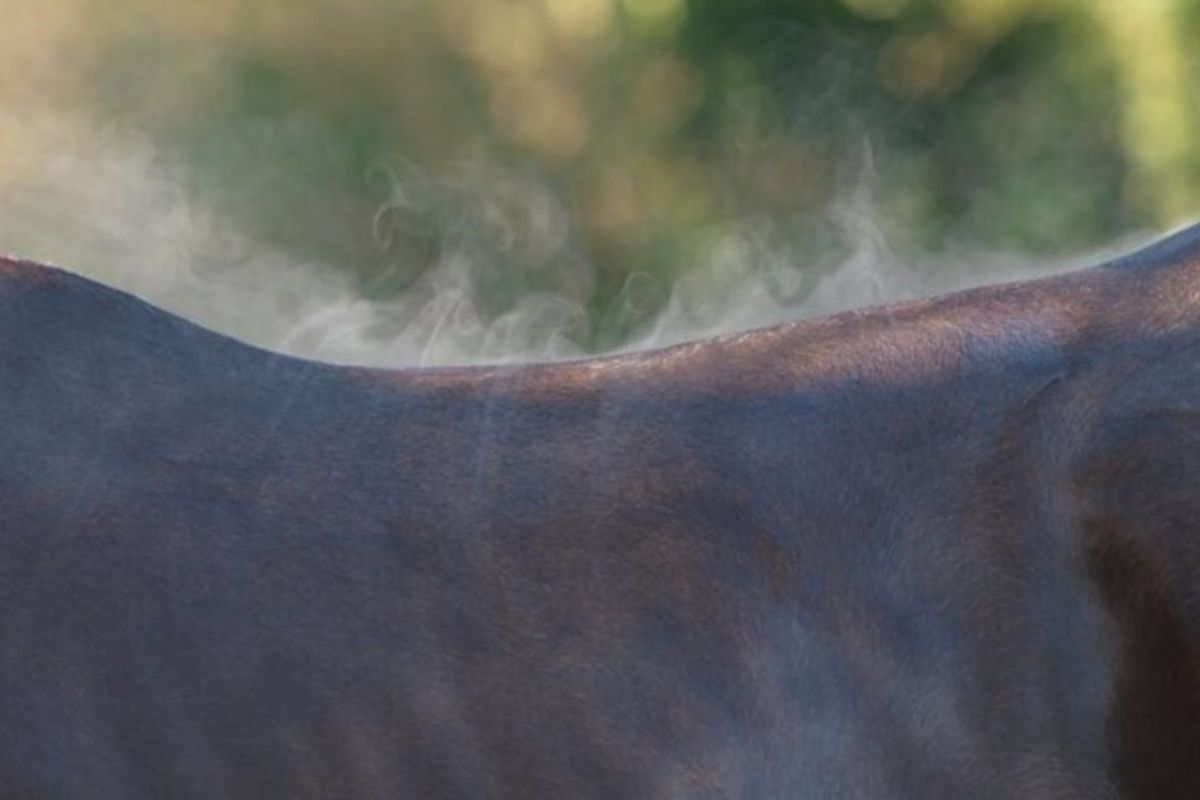Menu

Do you know how to deal with heat regulation? When the temperatures reach around 25 degrees Celsius, our horses have a hard time keeping their body temperature down. On really hot days, they are at risk of overheating, and it is our job to help them avoid it. Here we take a look at five ways to help cool the horse down in the summer heat.
According to agronomist and researcher Karin Morgan, who is particularly known for researching equine heat regulation at the Swedish University of Agricultural Sciences, the horse has the easiest time maintaining a healthy body temperature when it is between 5 and 25 degrees outside. This span is called the horse's thermoneutral zone, and of course, it only applies when the horse is neither clipped nor wearing a blanket.
That being said, no two horses are alike, and therefore some horses have a wider thermoneutral zone than others. Some can handle, for example, 30 degrees heat, while others find it very critical. Karin writes this in her research article Thermoneutral Zone and Critical Temperatures of Horses.
You may also like to read: Does your horse pee a lot? 3 reasons why this could be a serious problem
What can you do to control the heat regulation? Here are 5 slightly alternative - and some of them perhaps also a bit startling - suggestions on how to help your horse during a hot summer. Four of the pieces of advice are directly rooted in research, while the last one is just a nice suggestion.
We do not doubt that you are already diligent in finding the water hose and giving your horse a cool bath on hot days. It is probably one of the best things you can do, so keep up the good work.

However, what you can do is put the sweat scraper far away. What it does, is to help remove some of the water that should cool the horse down. Therefore, it is best to leave as much water as possible on the horse. This is according to an expert on thermoregulation Dr. David Marlin. Instead, turn the horse directly out in the field after a good wash down with the water hose. Then you have done the very best for your horse!
Many people mistakenly believe that the excess water on the horse will make the horse feel even hotter when you put it out in the sun after a bath. But that is not the case. Remember this when you are working with your horse´s heat regulation.
When you have been out riding, or if you have trained your horse hard in some other way, then it is especially important to get its tendons and joints cooled down. Of course, you can also use water here, but cooling gels or cooling clay often work for a longer time. You can also choose to use cooling boots or cooling shampoo.
To avoid overheating joints and tendons in the heat, you should also think about the type of bandages or boots you use for your horse - if it needs them at all.
Salt is important in order for the horse to bind fluid to the body. Without enough salt, it can dehydrate, even if it drinks a lot of water. Many horse owners are good at giving their horses salt in the form of electrolytes or mineral stones. But one must also be careful to not give the horse too much of it. Too much salt can cause fluid retention, high blood pressure, and, in a worst-case scenario, salt poisoning.

Some horses love the taste of salt, while others are less enthusiastic about it. Therefore, most horses are not even able to dose the right amount of salt using an ordinary mineral stone.
When it is hot, and heat regulation is a top priority the temperature in the horses' water tanks in the paddocks rises quite naturally. It can create algae growth and increase the content of bacteria in the water. Therefore, first and foremost, from a health-promoting perspective, it should be changed at least once a day, and preferably several times when it is hot.
In addition, it is also more inviting for the horse to drink fresh water. According to thermoregulation expert Dr. David Marlin horses prefer to drink water that is between 20 and 25 degrees hot. This is also shown by a study that is often referred to in these matters Drinking water temperature affects consumption of water during cold weather in ponies.
However, one should not be afraid to fill cold water in the horses' tubs when the weather is hot, according to Dr. David Marlin. First of all, it is still quickly heated by the sun, and secondly, it is a myth that horses do not like to drink cold water at all. This is backed up by Karin Morgan's study that shows that in hot weather there is no difference between horses preferring temperate to cold water.
Based on Karin Morgan's conclusion, it is also a good idea to give the horse a cold and refreshing snack. For example, you can make a large ice cube filled with delicious apples and carrots. Such a snack also keeps your horse a little busy in the paddock.
1. Find a plastic bucket that can withstand getting in the freezer. It can be anywhere between 1 and 5 liters in size.
2. Cut out an appropriate amount of your horse's favorite snacks into large cubes. Eg carrot, banana, and apple.
3. Put the different snacks in the bucket and mix them.
4. Pour water over so that the bucket is almost full.
5. Put the bucket in the freezer.
After 24 hours, you can give the giant snack ice cube to your horse.
In the video below, you can see and hear a woman tell how she makes delicious summer snacks for her horses.
Sources